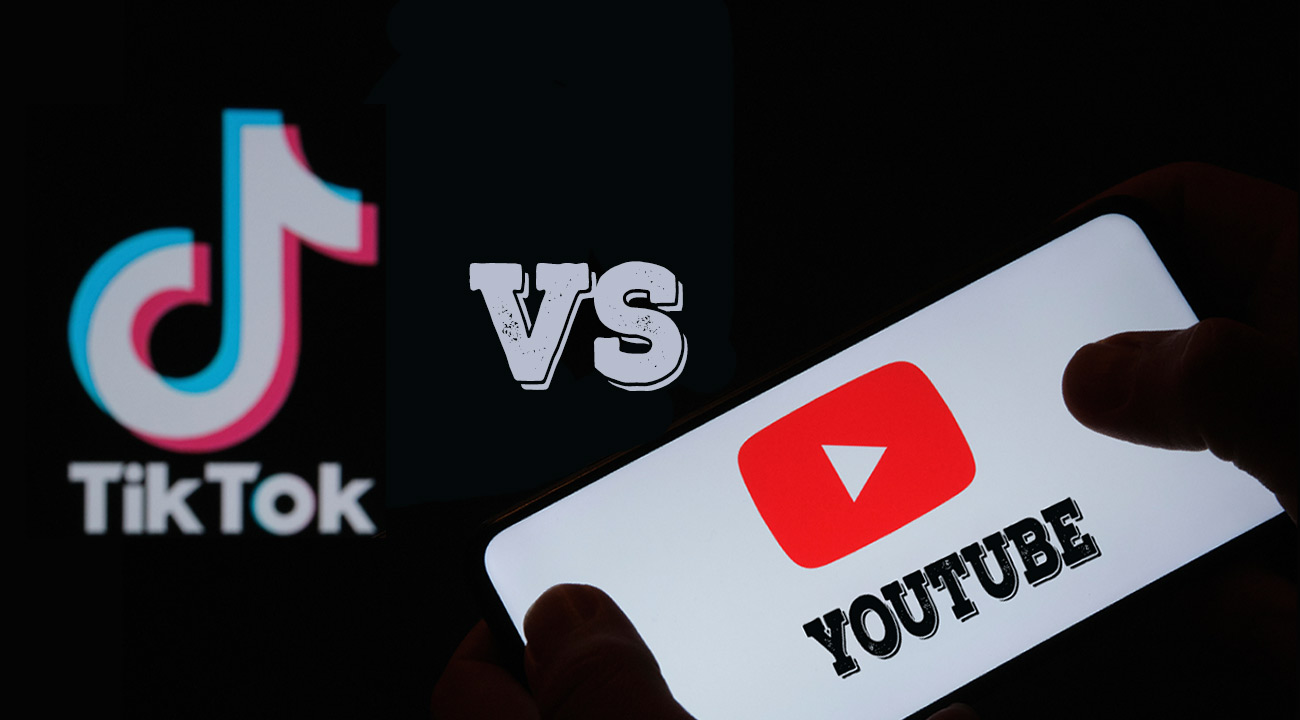With 62% of internet users preferring videos over any other form of content and 53% eager to see more video content in the future, it is quite evident why 86% of marketers are focusing on video marketing. In fact, the ROI generated from such marketing was satisfying to 88% of video marketers.
Among all social media platforms, YouTube has been the first choice for video marketers. However, the arrival of TikTok and the sudden rise in the popularity of short videos have changed the environment and unlocked many new opportunities. Marketers are now facing the dilemma of which platform to choose for video promotions.
On the surface level, YouTube is ideal for businesses trying to tap into a wide range of demographics and get better conversions. In contrast, TikTok is excellent for reaching younger audiences, creating a buzz, and boosting brand awareness.
However, there are several other important variables businesses must consider before making their final choice of platforms for video marketing. In this article, we will compare YouTube and TikTok based on these factors so that you can pick the most profitable platform for your business.
TikTok vs YouTube
Although both platforms are the same at their core, offering video content, they are vastly different in many other aspects. These features include the type of content, user demographics, ad format and management, monetization, interactions, algorithms, and so on.
Below, we have compared YouTube and TikTok based on these factors to help you understand the ins and outs of both platforms.
About
TikTok, the international version of Douyin, was released for iOS and Android devices in 2018. It became overwhelmingly popular in the next three years and grew 300% larger. It is primarily a social media app where users can watch and create short videos. These bite-sized videos get an average of 858 minutes of view every day.
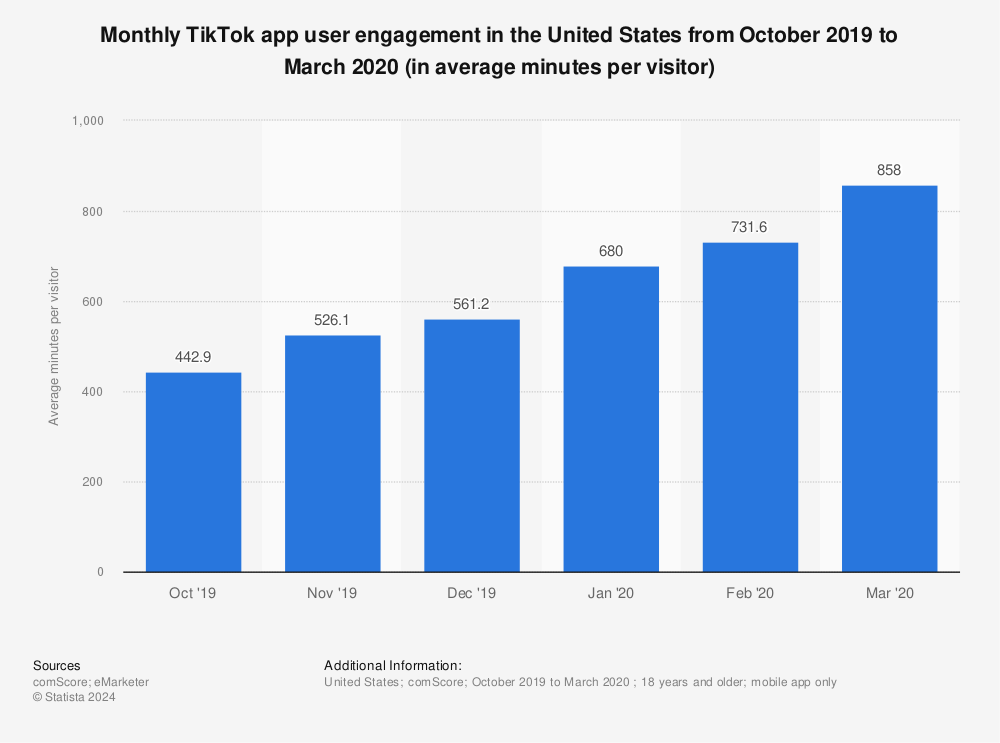
Source: Statista
YouTube, currently the second-most visited website in the world, was launched in 2005 and became a Google subsidiary in 2006. In 2021, 11.2% of Google’s revenue was generated from YouTube. It is an online video-sharing platform that lets users view and upload free-to-watch videos. Every minute, 694,000 hours of videos are streamed, whereas 30,000 hours of content get uploaded every hour on YouTube.
Algorithm
Both platforms use artificial intelligence to recommend a specific set of videos to each user based on their interest. However, the difference lies in what data YouTube and TikTok use to determine user interest in the content recommendation.
TikTok displays the recommended content on each user’s For You page to make the content more easily accessible. Based on how a user interacts with a video, the type of account they follow, and the type of videos they like. The For You page is also optimized to curate the selection based on the user’s location and TikTok search queries.
When it comes to YouTube, videos are recommended mainly based on watch time. It obtains information about a user’s watch history, activities, location, possible interests, duration of watching certain videos, and satisfaction level. Based on these data, global and local context, and current trends, YouTube displays a large selection of recommended videos and topics on each user’s homepage.
User Base And Demographics
As of September, YouTube has 2.1 billion monthly active users, whereas TikTok has 1 billion monthly active users.
The largest portion of TikTok’s user base, 41%, belongs to 16 to 24-year-olds. Therefore, a significant percentage of all the current trends among Gen Z originated on TikTok. Moreover, 57% of TikTok users are women, and 24% of these female users are 18 to 24 years old. On the other hand, 35% of male users are 18 to 34 years old. The platform is available in 150 countries, and with 136.5 million users, the US is currently the country with the largest TikTok audience.
Unlike TikTok, YouTube is more popular among men, with 53.90% male users. 34.62% of YouTube users are 18-24 years old, making up the largest age group on the platform. The second-largest age group, containing 25 to 34-year-olds, makes up 33.41% of its user base. As of now, India has the biggest YouTube audience size, amounting to 467 million. YouTube also has the highest ACSI (American Customer Satisfaction Index) score of 76 among all social media platforms.
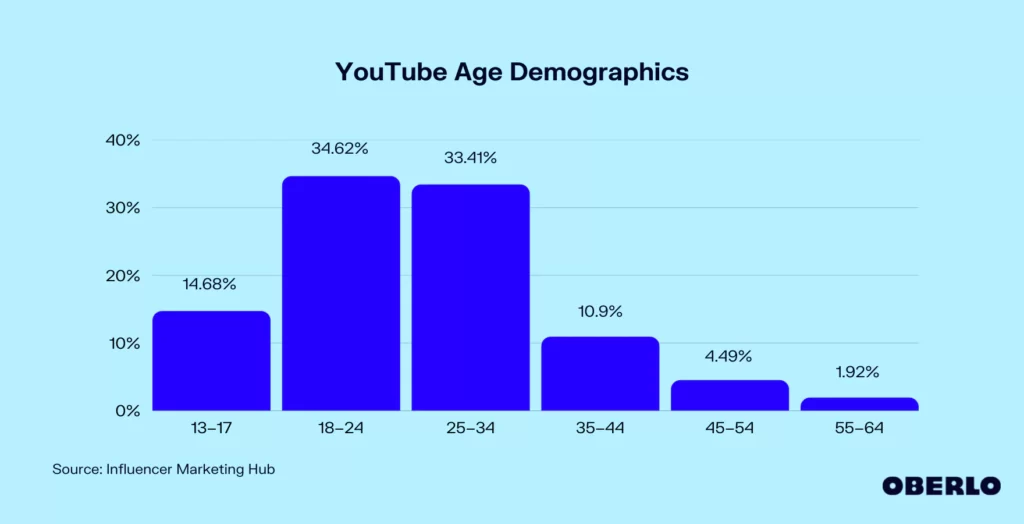
Type Of Content
Both platforms strive to promote quality video content that is appreciated and demanded by their user base. However, since the demographics of both user groups are different, the types of content promoted on each platform are also different.
TikTok users prefer fun, lighthearted, and entertaining videos. Dance videos, hilarious skits, lip-sync, and tutorials are the most prevalent on the platform.
On the other hand, there is a wide array of content types on YouTube. From kids’ cartoons to global economics and politics, videos related to everything are available there and have their own target audience and fan base. No matter what tone you want to set with your video, serious, casual, light, or grim, YouTube most likely contains your target audience.
Monetization
Whereas YouTube offers several scopes for earning from your content, including monetizing your channel, TikTok does not offer any direct monetization option.
If a content creator or channel can rack up enough subscribers, views, and watch time on their videos, they can get monetized by YouTube and earn from the ads placed on and around their content. Moreover, affiliate marketing, influencer marketing, brand promotion, and merchandise selling are some other ways through which YouTubers can earn a substantial amount of money.
A TikToker cannot get their user ID monetized for ad placement. However, popular TikTokers who have a large fan base in different niches often get reached out by brands. Therefore, just like YouTubers, TikTokers can earn from brand promotion, affiliate marketing, and influencer marketing.
Ad Formats
On YouTube, you can place video ads, image ads, full-screen experience ads for phones, and carousel ads. On the other hand, on YouTube, you can run auto-play ads on your target users’ For You page, full-screen static or dynamic ads, top-view ads, hashtag challenges, promotion of brand effects and music, etc.
Ad Manager
Unlike TikTok, YouTube has its own ad management tools.
Ad managers are crucial for keeping track of your ad campaigns. As YouTube is a Google subsidiary, it has a very reliable ad manager developed by Google. In contrast, TikTok has no such dedicated ad manager. However, there are plenty of third-party apps available to track your campaign’s conversions.
Ease Of Use
TikTok’s user interface is more convenient, simple, easy to use, and optimized for mobile devices and slow internet. However, YouTube’s user interface is comparatively more complicated.
When you open the TikTok app, you can immediately start scrolling through auto-play videos on the For You page, which is already optimized based on your activities. Moreover, as the app already contains filters and editing tools, it is quick and easy for creators to upload content. However, the app’s search process is not accurate enough.
YouTube’s web page has a traditional and classic design that most old and new users are comfortable with. However, the YouTube App is not as user-friendly as TikTok. It requires further navigation to play a video, and you cannot just keep free scrolling. Furthermore, YouTube offers no in-app video creation or editing tools. However, its search process is precise, and the platform is optimized to play even the highest-quality videos. You can also create a playlist and browse through your preferred genre, features that TikTok lacks.
Optimum Video Length
TikTok is the powerhouse of short, bite-sized videos, whereas YouTube is ideal for all lengths of videos as long as the content is of good quality, in demand, and engaging.
On TikTok, you can upload videos with a maximum length of 10 minutes. The platform has been extending its maximum content length limit to promote more creative possibilities. However, the optimal video length for TikTok is 21 to 34 seconds.
In contrast, YouTube welcomes videos of all lengths – from a few seconds to even 24 hours long. However, for engaging business video content, the optimal length is 6 to 8 minutes. When it crosses 10 minutes, the possibility of losing viewers accelerates.
YouTube has recently introduced YouTube Shorts to meet users’ demand for bite-sized content. Here, the maximum length limit is 60 seconds. Although it is not as popular as TikTok yet, it is a great feature for creators and businesses that want to focus on YouTube only.
Communication
YouTube has no direct messaging option, but TikTok does as it is primarily defined as a social media platform.
On TikTok, besides uploading videos, a user can like, comment, and share others’ content and send direct messages to users. There are also options for creating collaborated videos, such as duet videos.
TikTok’s communication features are particularly important for businesses that want their customers to be able to directly reach them as a response to their promotional effort on the platform.
However, YouTube users can also upload, like, comment on, and share videos, but they cannot send direct messages to other users. Therefore, while publishing a video, many creators leave external links to reach them if applicable. Businesses that want direct interactions with a customer may find this inconvenient. But it is extremely useful for businesses that want to boost the traffic and conversion of their own website or sell products on other eCommerce platforms.
Pros And Cons Of Using TikTok For Business
TikTok is an ideal platform for quickly accumulating a fan following and increasing brand awareness. However, as the preference of TikTok’s users constantly keep changing and the trends are very short-lived, it is difficult to retain the stream of benefits unless you continuously keep delivering highly engaging and entertaining content.
There are other pros and cons of using TikTok for a business, and you have to understand them in the context of your target market, brand image, organizational culture, and products or services. Let’s take a quick look at them.
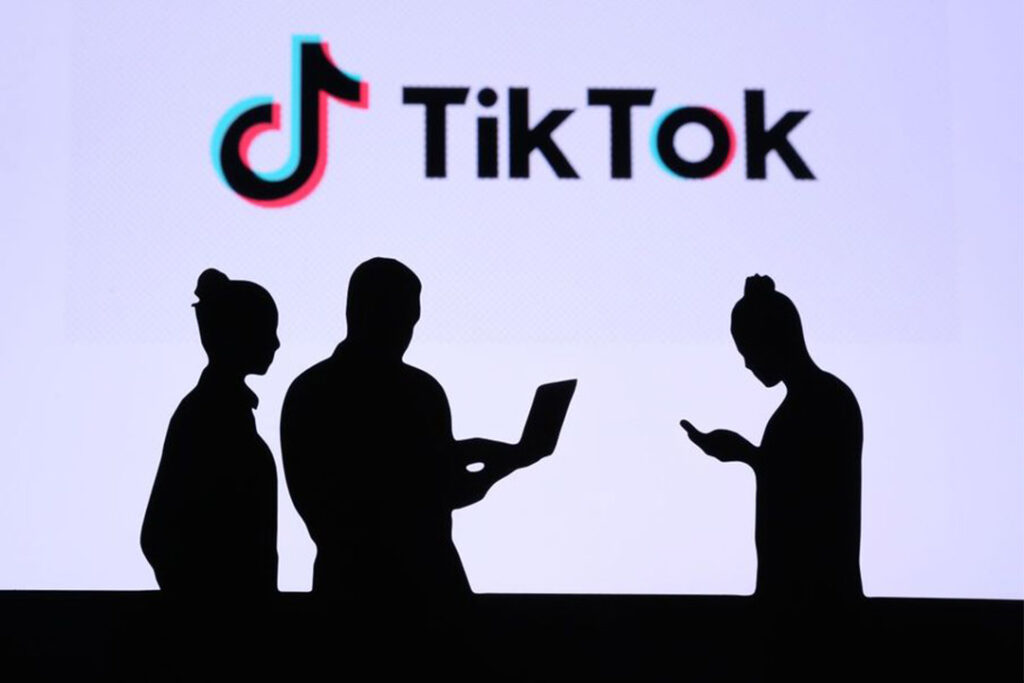
Pros Of Using TikTok For Business
- TikTok is ideal for drawing the attention of the young target market, especially Gen Z.
- Most users on the platform are very active in interacting with the content and users they like. A fan base of these active users can boost a brand’s popularity and offer powerful word-of-mouth marketing opportunities.
- There are self-serve ad formats and creative ad tools to enable businesses to design and run their own marketing campaigns.
- TikTok has been observed to be the primary source of most current trends. Whether your business stirs one or creatively keeps following the relevant ones, your brand awareness will improve.
- TikTok has a high engagement rate, and due to shorter lengths of content, more full-time views are gained.
- As the app has its own tools for capturing and post-processing videos, it requires less investment of resources such as time, money, and human resources.
- TikTok has a more laid-back and casual vibe, with no stress to achieve perfection.
Cons Of Using TikTok For Business
- TikTok is not very beneficial for businesses whose target market is more than 25 years old and belongs to a higher-income group.
- Popularity on this platform has a short life-span
- Advertisers have just a few seconds to effectively communicate the message.
- TikTok is not ideal for businesses that want to build a highly professional, formal, and mature brand image.
- The platform is not very effective in increasing conversions for large businesses and B2B companies.
Pros And Cons Of Using YouTube For Business
For advertising, YouTube is the most popular platform for marketers. With integrated Google AdWords, businesses can run their marketing campaigns with a more accurate focus on their target market. However, to engage potential customers with effective messages on YouTube, businesses have to invest a substantial amount of time and resources.
Therefore, to best invest your marketing budget, you need to understand the pros and cons of using YouTube for business and evaluate them based on your circumstances.

Pros Of Using YouTube For Business
- The user base is significantly higher and demographically more diverse than TikTok, offering the opportunity to reach more of your target audience.
- The “Find my Audience” feature of YouTube allows you to explore your existing and potential target market and focus your promotional efforts more precisely.
- It has a range of ad placement and format options.
- Marketers can track important measures with real-time analytics.
- You can publish much longer videos on YouTube, offering you more time to effectively communicate and creatively display your messages.
- YouTube is ideal for portraying any type of brand image and organizational culture – from extremely casual to strictly professional.
- The platform can help boost both brand awareness and conversions.
Cons Of Using YouTube For Business
- To run profitable marketing campaigns, you will need to commit a significant amount of resources.
- If you want to open your own business account for promotion, it will take a very long time until you get enough exposure.
- YouTube influencers are more expensive than those on TikTok.
- Your viewers cannot directly reach you with queries.
Is TikTok Becoming More Popular Than YouTube?
Currently, YouTube is more popular than TikTok, and it does not seem likely to be surpassed by TikTok soon.
However, as TikTok keeps trying to optimize its platform to gain more users encompassing other demographics, it has the potential to surpass YouTube in the future.
As of 2022, YouTube has still remained the most popular video-sharing platform among 13 to 17-year-olds. However, TikTok is becoming more preferred to YouTube for running influencer marketing programs. Whereas YouTube still has an overwhelming sum of user base, TikTok is growing incredibly fast as well.
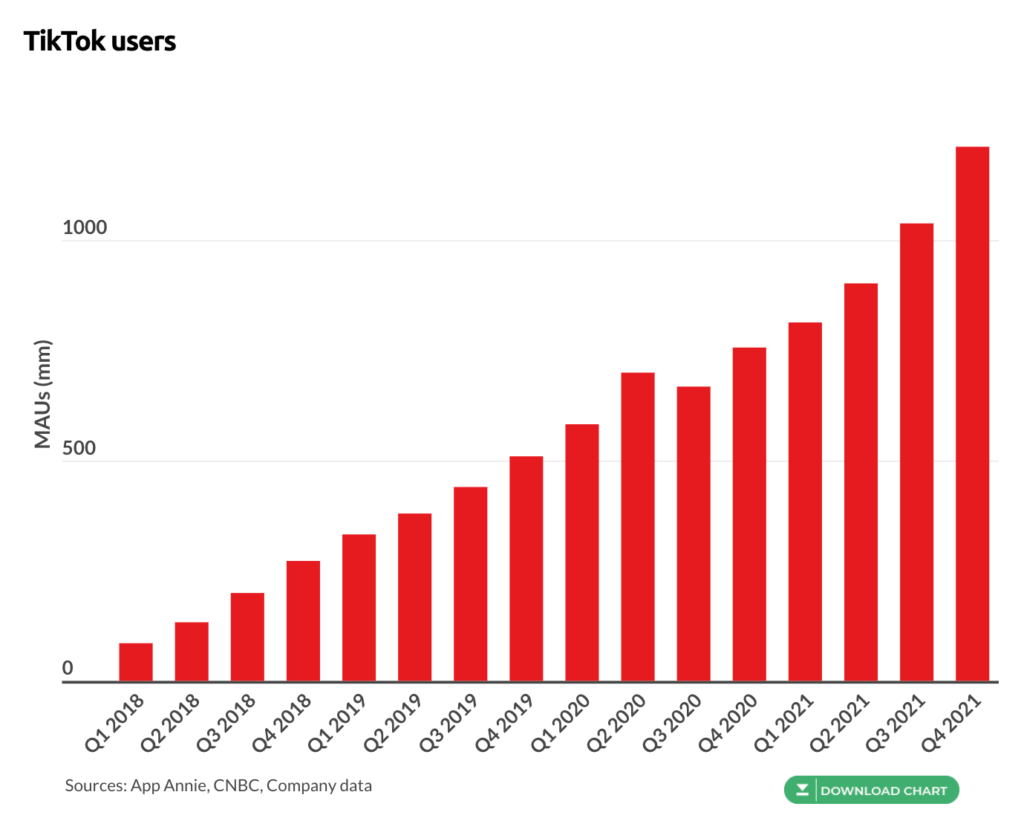
TikTok vs YouTube: Which Platform Should You Choose?
In short, your choice of platform depends on three factors- the type of content you want to deliver, your target audience, and your resource commitment, such as the allocated marketing budget.
If you want to make quick, fun, and attention-grabbing marketing content emitting a more laid-back vibe, TikTok is your best choice. However, for longer, more elaborate, creative, and engaging videos, YouTube is the better option.
As for your target market or audience, use TikTok to grab the attention of the Gen Z population. If you provide B2B services to small home businesses, TikTok is also a good place to showcase your work, especially creative works. However, with YouTube, you can reach all demographic groups. Moreover, Youtube is ideal for promoting complex and extensive B2B services as you have more time to thoroughly explain them.
Finally, the average YouTube CPM starts from $3.50, whereas the average TikTok CPM starts from $10.00. On the other hand, the video production cost is usually higher for YouTube if you want to publish good-quality content. Therefore, based on your budget and desired ROI, choose the platform that offers the most value.
Many successful businesses use a cross-platform marketing strategy for social media marketing. You can use both TikTok and YouTube for your business and enjoy the benefits both platforms offer. Promoting YouTube channels on TikTok is a common practice as well. You can either use important snippets from your YouTube video on TikTok or develop separate content for each platform. However, for advertising, a cross-platform strategy will require more financial investment. So carefully analyze your options and make the most informed and profitable choice.

